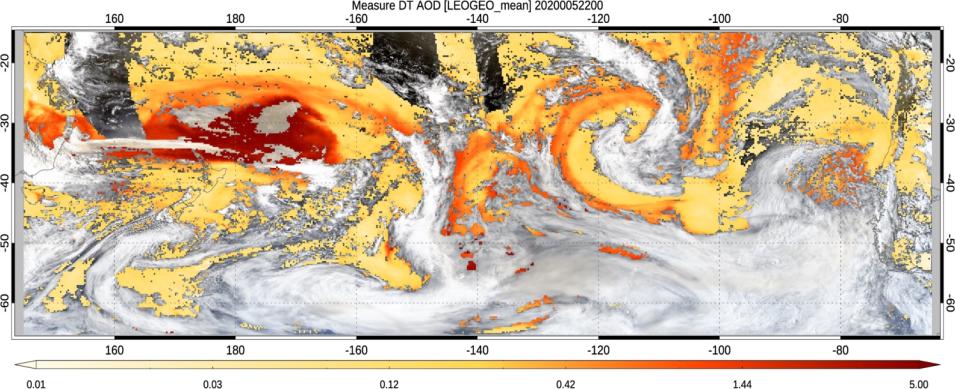Aerosols (tiny particles) in the atmosphere can have a significant impact on weather, climate, and air quality. Satellite-borne sensors like the Moderate Resolution Imaging Spectroradiometer (MODIS) and Visible Infrared Imaging Radiometer Suite (VIIRS) play a key role in monitoring atmospheric aerosols. Using the observations from MODIS and VIIRS flying on satellites in Sun-synchronous low Earth orbits (LEO), we can monitor global aerosols on a near-daily basis. Sometimes, though, daily measurements aren’t enough. Intense aerosol plumes from events like dust storms and wildfires can move and change rapidly, and more frequent observations are needed.
The launch of Japan's Advanced Himawari Imager (AHI) in 2015 and the U.S. Advanced Baseline Imager (ABI) in 2017 and 2018, began a new capability for aerosol observations. From geostationary Earth orbit (GEO) over the equator at more than 36,000 km above the planet, these imagers observe nearly a third of the globe every 10 to 15 minutes.
By applying the same Dark Target aerosol retrieval algorithm for data acquired by the low Earth orbiting MODIS and VIIRS sensors to data acquired by the geostationary Earth orbiting AHI and ABI sensors, one can unite global/daily and regional/sub-daily observations. Running the Dark Target retrieval independently on six sensors (three aboard LEO satellites and three aboard GEO satellites) for the 2019 to 2022 time period led to the creation of a consistent aerosol product that increases the availability of observations. This combined GEO-LEO aerosol product increases confidence and retrieval coverage that can benefit and improve many weather climate and air quality applications.
This webinar introduces the GEO-LEO Dark Target Aerosol data product suite and shows how to find, access, and download the data using the Find Data tool at NASA's Level-1 and Atmosphere Archive and Distribution System Distributed Active Archive Center (LAADS DAAC).
